What is an inverted microscope?
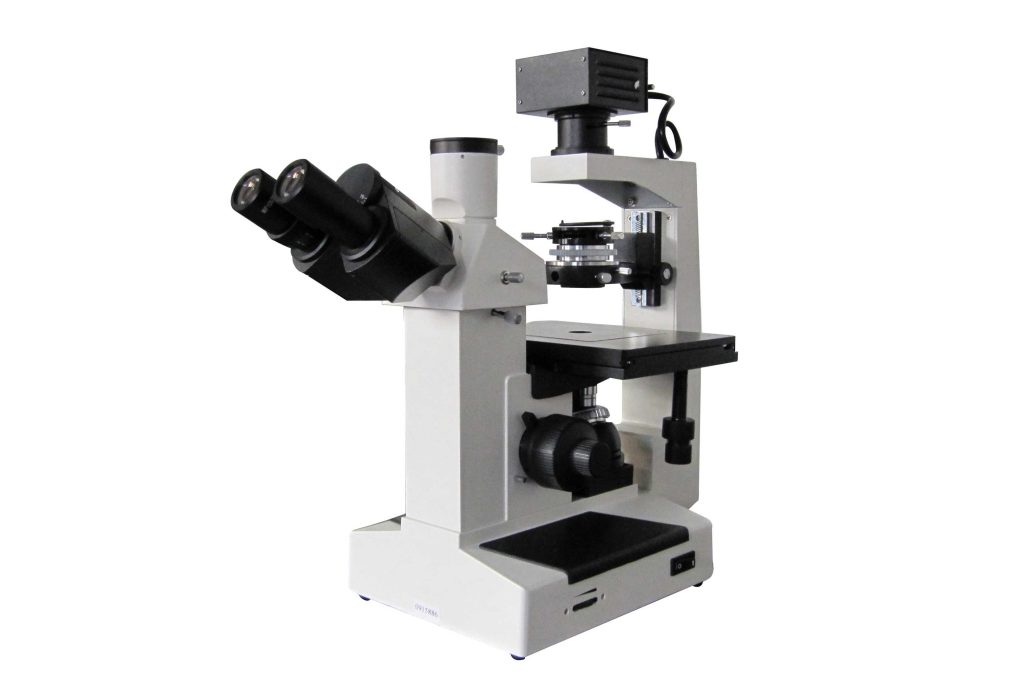
An inverted microscope is a microscope in which the objective lens and illumination system are reversed. It is mainly designed to meet the needs of liquid-based microscopic observation in the fields of biology and other fields.
In applications such as cell culture, tissue culture, plankton, environmental protection, food inspection, etc., the object to be inspected is usually in a solution in a container such as a petri dish or a culture bottle, which requires the objective lens and condenser lens of an inverted microscope to be designed with a long working distance , in order to observe and study the analyte attached to the inner wall of the container or suspended in the solution without touching the container.
What is an upright microscope?
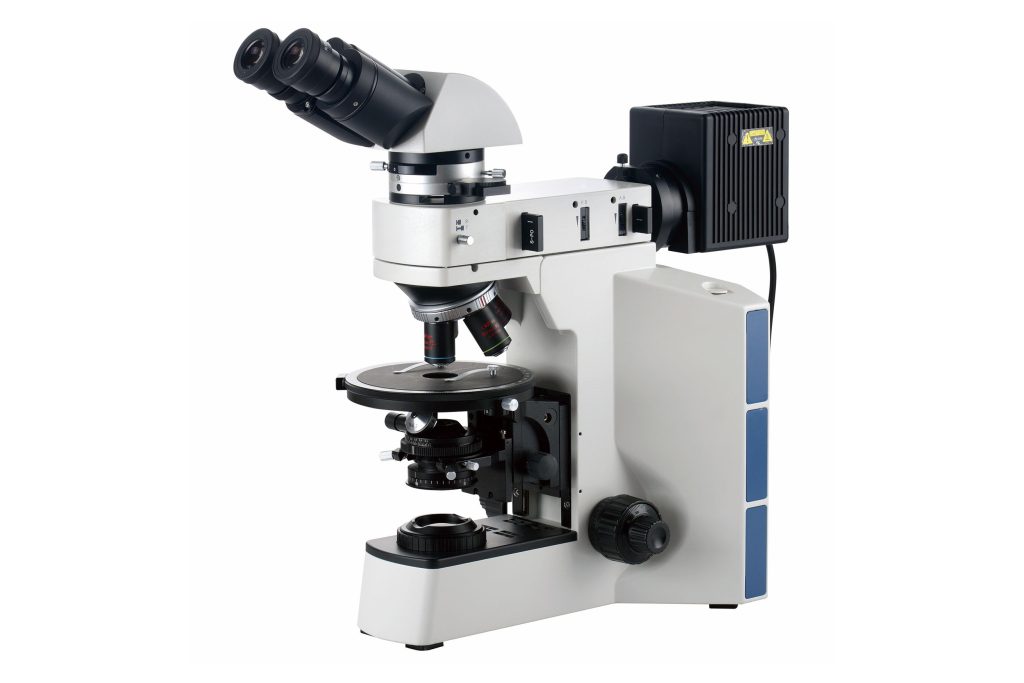
An upright microscope is a commonly used microscope type that is widely used in fields such as biology, medicine, and materials science. It helps scientists and researchers observe and study tiny biological samples and materials. In biology, upright microscopes are used to observe and study tiny organisms such as cell structures, tissues and organs, and microorganisms. Through the upright microscope, the morphology, structure and function of cells can be observed and studied, revealing the mysteries of life.
Six Differences Between Inverted Microscopes and Upright Microscopes
Difference 1: Appearance difference
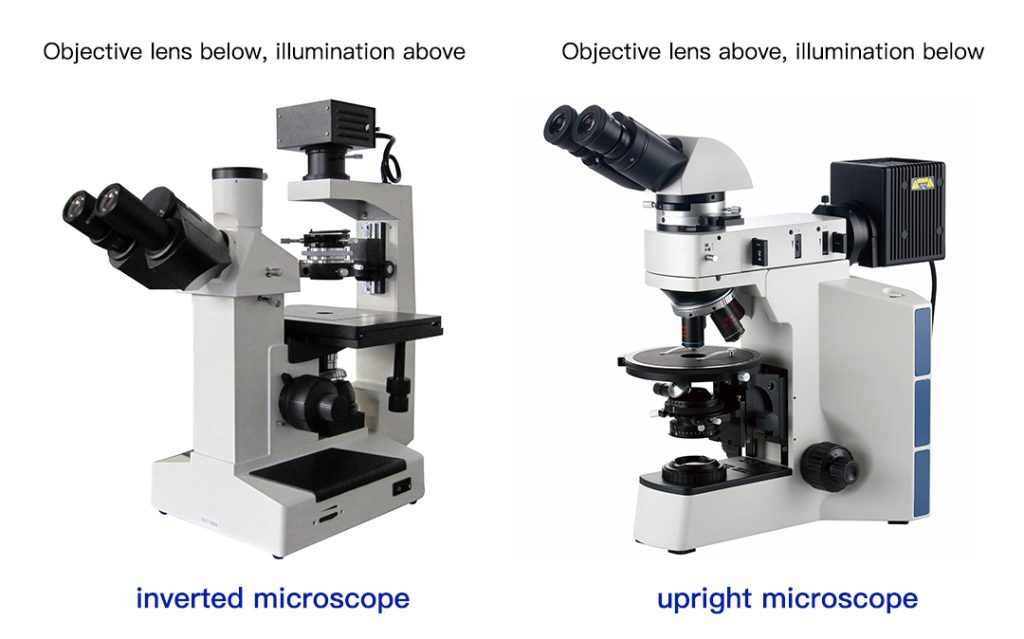
The objective lens of an upright microscope is above the stage, and the transmitted light source is below; while the objective lens of an inverted microscope is below the stage, and the transmitted light source is above. The two can be easily distinguished by their appearance.
Difference 2: The optical correction of the objective lens is different
Objectives for upright microscopes are calibrated for very thin coverslips, and body-related marks are low values like 0.17; inverted microscopes are calibrated for thicker slides, and petri dish bottoms, and body-related marks Will be a value above 1. Therefore, the two objective lenses cannot be used universally, and upright microscopes and inverted microscopes can be distinguished accordingly.
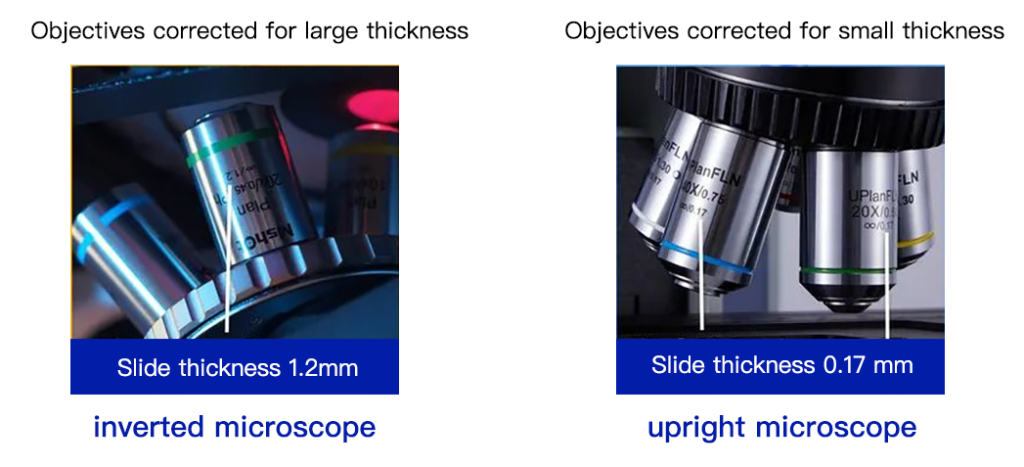
Difference 3: The working distance of the objective lens is different
Inverted microscopes are usually used to observe objects in solution, such as cells in culture medium. In order to focus on suspended objects in the solution, the working distance of the objective lens of the inverted microscope will be larger than that of the upright one.
Inverted objectives with the long working distance
| Objective lens | Long working distance plan objective lens M-UPLFLN 4X/0.13 Working distance: 17.15mm |
| Long working distance plan achromatic objective lens Plan 40X/0.58 Working distance: 2.5mm | |
| Long working distance plan achromatic phase contrast objective lens Plan 10X/0.25 PH Working distance: 9.3mm | |
| Long working distance plan achromatic phase contrast objective lens Plan 20X/0.45 PH Working distance: 5mm |
Upright microscopes have a relatively short working distance
| Objective lens | Infinity plan achromatic objective lens 4X/0.1 Working distance: 21.5mm |
| Infinity Plan Achromat Objective 10X/0.25 Working Distance: 7.5mm | |
| Infinity Plan Achromat Objective 40X/0.65 Working Distance: 0.65mm | |
| Infinity plan achromatic objective lens (oil) 100X/1.25 Working distance: 0.185mm |
Difference 4: Difference in magnification
Upright microscopes can choose 100X objective lens, which can be matched with 10X eyepieces to achieve a high magnification of 1000X; the maximum magnification of the objective lens of an inverted microscope is only 60X, because the objective lens is almost attached to the sample at 100X, and the working distance is already smaller than the thickness of the bottom of the container. That is to say, the objective lens has hit the bottom of the container before the focus is successful, and it is impossible to focus at all.
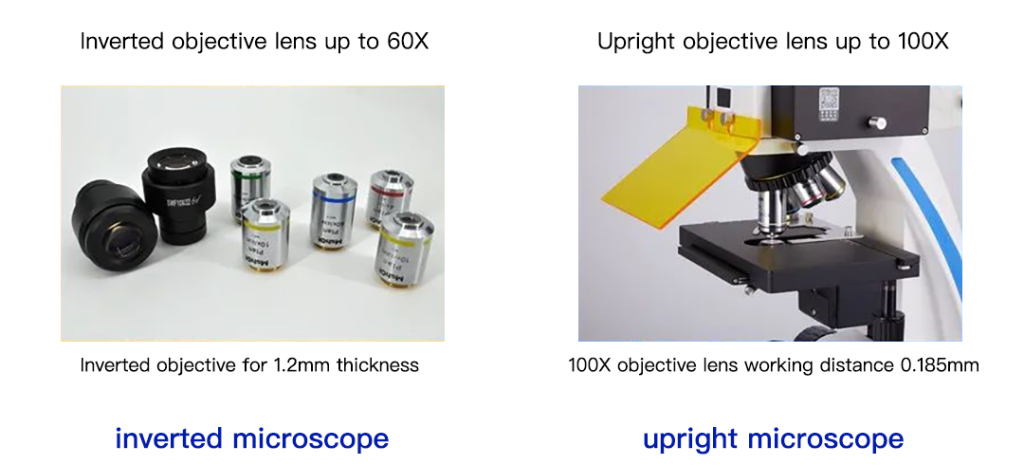
Difference 5: Inverted Standard Phase Contrast Observation
Inverted microscopes are often used for the observation of colorless and transparent living cells. Therefore, phase contrast rings and phase contrast objectives are standard to achieve phase contrast observation. There are usually four magnifications of 4X, 10X, 20X and 40X, and phase contrast objectives. Upright microscopes need special condenser accessories for phase contrast observation, so phase contrast upright microscopes are not common, and the standard objectives do not include phase contrast objectives.
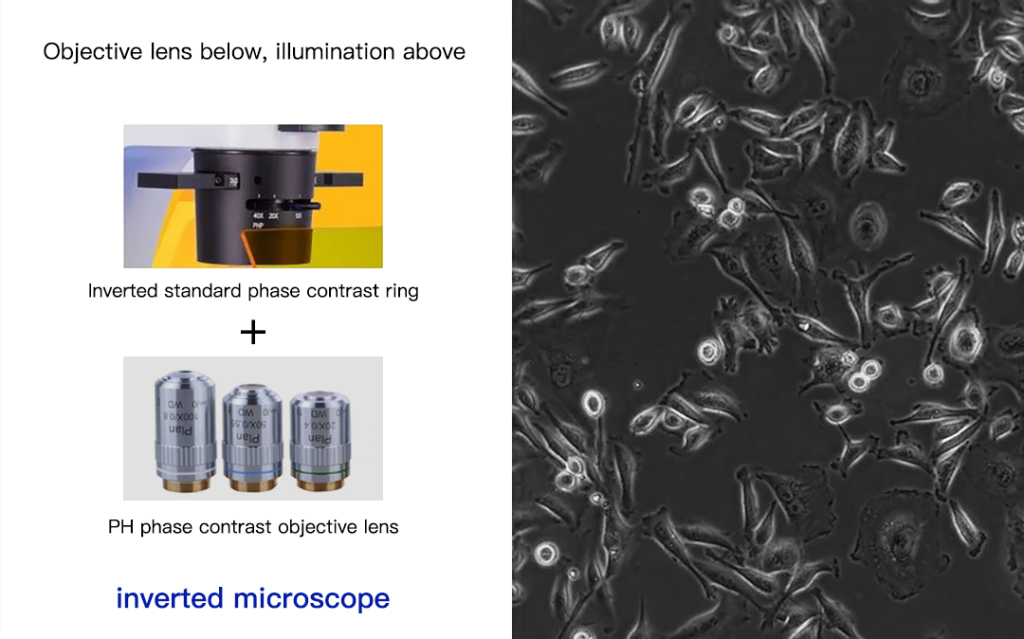
Difference 6: Small sample height limit
The condenser of the inverted microscope is also designed with a long working distance, and some of them can be heightened. The inverted microscope can heighten the spotlight and place a 10-layer cell factory.
In addition, some inverted microscopes may also cancel the upper light source to remove the sample height limitation. For example, metallographic microscopes use inverted reflected illumination without an upper light source, which can be conveniently placed directly to observe large-sized metal material samples, reducing the trouble of sample preparation.
The above are the main differences between an inverted microscope and an upright microscope.